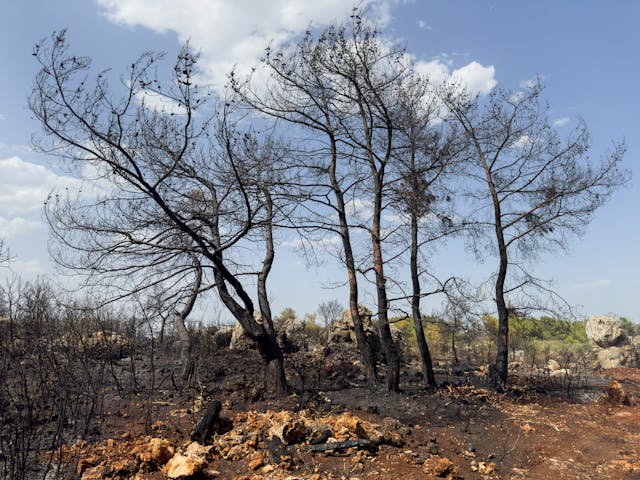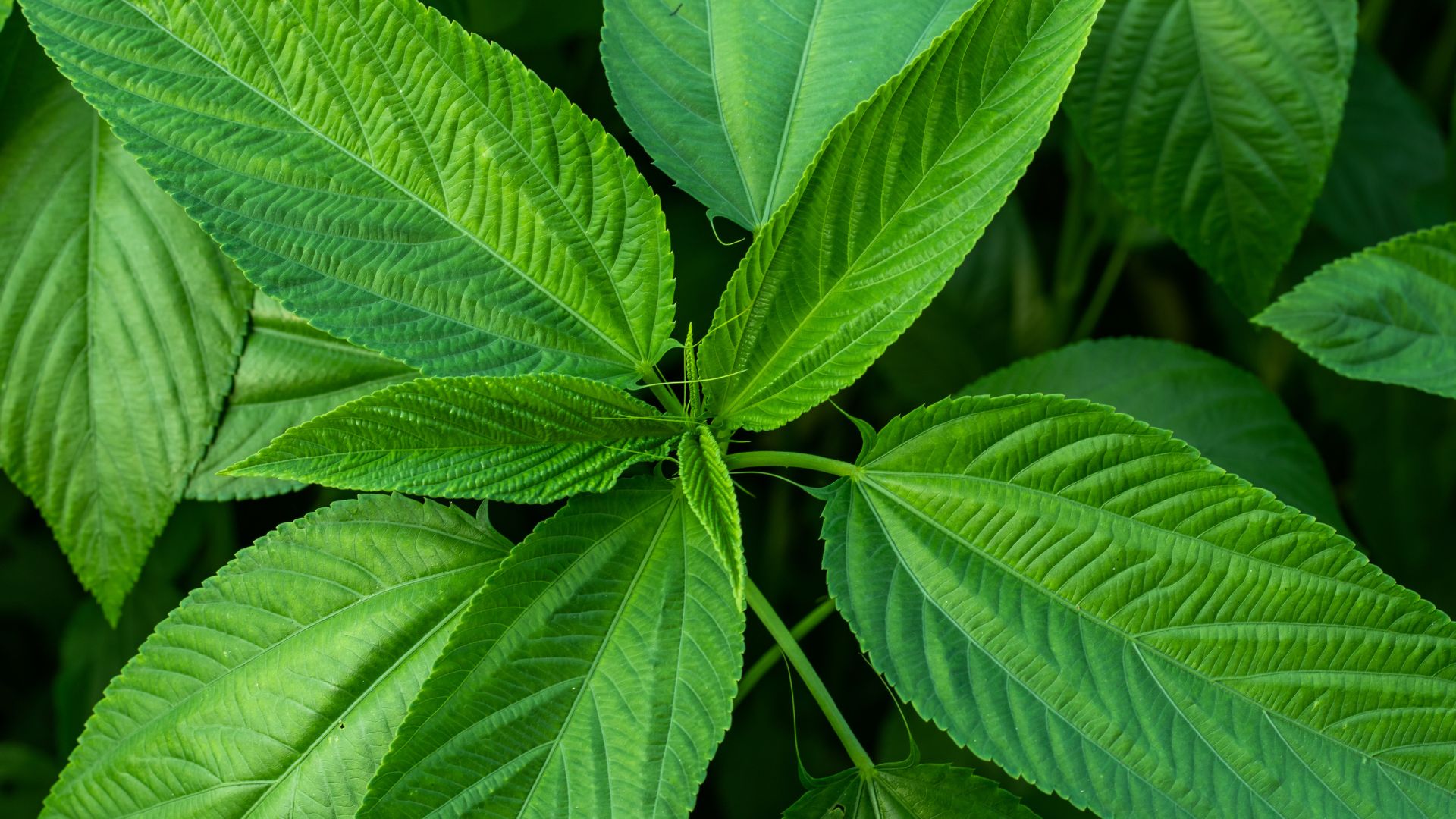Climate change has emerged as the defining environmental challenge of the 21st century. Rising global temperatures, frequent extreme weather events, and shifts in rainfall patterns are all symptoms of a planet struggling to balance the atmospheric concentration of greenhouse gases (GHGs). Among these, carbon dioxide (CO₂) is the most significant, accounting for around three-quarters of global emissions. To limit global warming to 1.5–2°C above pre-industrial levels, urgent measures must be taken to reduce emissions and enhance natural carbon sinks.

Forests, wetlands, and soils are widely recognized as critical carbon sinks, yet there is another overlooked resource: fiber crops. Natural fibers like jute, cotton, and hemp are renewable biological systems that sequester carbon during their growth and lock it into usable products. Among these, jute stands out as one of the most promising eco-friendly crops due to its rapid growth, high biomass production, and biodegradability.
This article explores the carbon sequestration potential of jute, examining its ability to absorb and store CO₂, comparing it with synthetic alternatives, and evaluating its role in global climate mitigation strategies.
What is Carbon Sequestration?
Carbon sequestration refers to the long-term storage of carbon in plants, soils, oceans, or geological formations. The process can occur naturally or be enhanced through human intervention. Broadly, sequestration is categorized into:
-
Biological Sequestration – Storage of carbon in vegetation, soil, and wetlands through photosynthesis.
-
Geological Sequestration – Storage in underground formations such as depleted oil fields or saline aquifers.

Plants play a central role in biological sequestration. Through photosynthesis, they absorb atmospheric CO₂, convert it into sugars, and use it to build tissues. The stored carbon can remain in biomass for months (in annual crops) or centuries (in forests). Although jute is an annual crop, its fast growth rate and large biomass accumulation make it significant as a short-term carbon sink.
Jute: An Overview
Jute is the common name for plants belonging to the genus Corchorus, primarily Corchorus capsularis (white jute) and Corchorus olitorius (tossa jute). It is cultivated mainly in tropical regions, with India and Bangladesh accounting for over 90% of global production.
-
Growing Season: 100–120 days.
-
Climate: Warm, humid conditions with 25–35°C temperature and 150–200 cm annual rainfall.
-
Yield: 2–3 tons of dry fiber and 6–7 tons of woody byproducts per hectare.
Beyond its fiber, jute has multiple uses: sticks are used as fuel or construction material, leaves are consumed as vegetables in some regions, and residual biomass enhances soil fertility. Its eco-friendly nature has earned it the title of the “Golden Fiber.”
Jute’s Photosynthetic Advantage
Photosynthesis is the engine of carbon sequestration. Jute plants are highly efficient photosynthesizers, producing a large biomass within a short period.
-
Biomass Production: Studies estimate that one hectare of jute can absorb 10–15 tons of CO₂ during its growing season.
-
Comparison: Cotton sequesters around 3–4 tons per hectare, while wheat and rice average 2–3 tons.

Although jute follows the C3 photosynthetic pathway, which is generally less efficient than C4 crops like maize, its rapid vertical growth, dense canopy, and long growing season contribute to substantial CO₂ absorption. This makes jute an excellent candidate for short-term sequestration and a valuable component of climate-smart agriculture.
Carbon Storage in Jute Biomass
Jute biomass includes stems, leaves, roots, and fibers. While the fiber is the most commercially valuable part, the non-fiber biomass also plays a crucial role in carbon retention.
-
Fiber (30–40% of biomass): Stores carbon in a durable form; can last for years when used in textiles, jute bags, and ropes.
-
Sticks and Woody Matter (50–60%): Often used in paper, particle boards, or fuel, contributing to short- to medium-term carbon storage.
-
Roots and Leaves: Enhance soil organic matter when left in the field.
A critical step in jute processing is retting, where stems are soaked in water to extract fibers. While traditional retting can release organic matter and methane, modern retting techniques (enzyme retting, ribbon retting) reduce emissions and improve fiber quality.
Thus, even though some carbon is released during processing, a large portion remains locked into fiber-based products — from shopping bags to carpets — extending sequestration into the product life cycle.
Jute and Soil Carbon Sequestration
Beyond biomass, jute cultivation improves soil health, which indirectly supports long-term carbon sequestration.
-
Root Contribution: Jute’s fibrous root system contributes to soil organic carbon (SOC) after decomposition.
-
Erosion Control: Dense jute canopy reduces topsoil erosion, preserving soil carbon stocks.
-
Intercropping Benefits: Jute is often grown in rotation with rice or pulses, enhancing soil fertility and organic content.

Image Taken
Over multiple seasons, this practice contributes to regenerative agriculture, where soils act as resilient carbon reservoirs while supporting food security.
Comparing Jute with Synthetic Fibers
One of the strongest arguments for jute’s climate role comes from its comparison with synthetic fibers.
-
Synthetic Fibers (polyester, nylon, polypropylene): Derived from fossil fuels; production emits 2–3 kg CO₂ per kg of fiber. Non-biodegradable, persisting for centuries in landfills.
-
Jute Fiber: Renewable, biodegradable, and sequesters CO₂ during growth. One ton of jute fiber is estimated to offset around 2.4 tons of CO₂ equivalent emissions.
Life Cycle Assessment (LCA) studies highlight that a jute bag has 10–12 times lower carbon footprint than a plastic bag over its lifespan. When adopted widely, jute can play a significant role in replacing plastics in packaging, thus offering a double climate benefit: sequestration during cultivation and emission avoidance by reducing plastic use.
Jute in Climate Mitigation Strategies
Jute aligns with global and national climate policies:
-
Nationally Determined Contributions (NDCs): Countries like India and Bangladesh could include jute as a carbon-offset crop in their emission reduction commitments.
-
Carbon Credits: With proper accounting, farmers could earn credits for cultivating jute, incentivizing sustainable practices.
-
Circular Economy: Jute products (bags, mats, composites) fit well into a zero-waste circular system.
-
UN SDGs: Jute contributes to SDG 12 (Responsible Consumption and Production), SDG 13 (Climate Action), and SDG 15 (Life on Land).
This positions jute not only as a crop but as a strategic tool for climate policy.
Challenges and Limitations
Despite its potential, several challenges limit jute’s effectiveness as a carbon sink:
-
Seasonal Crop: As an annual crop, jute stores carbon temporarily compared to perennial forests.
-
Retting Emissions: Traditional retting methods may release methane, reducing net sequestration benefits.
-
Market Volatility: Decline in global demand due to synthetic substitutes affects the cultivation area.
-
Measurement Gaps: Lack of standardized frameworks to quantify jute’s carbon sequestration potential at scale.
Addressing these challenges requires investment in research, technology, and market promotion.
Innovations and Future Prospects
New technologies and applications are expanding jute’s role in climate solutions:
-
High-Biomass Varieties: Breeding programs are focusing on jute with greater carbon capture potential.
-
Eco-Friendly Retting: Enzyme-based retting reduces methane emissions and water use.
-
Jute Biochar: Conversion of jute biomass into biochar could lock carbon in soils for centuries.
-
Composites & Industrial Uses: Jute fiber-reinforced composites are replacing plastics in automotive, packaging, and construction sectors.
These innovations can transform jute from a traditional crop into a cornerstone of green industries.
Policy and Global Perspectives
Governments and international organizations are beginning to recognize jute’s role:
-
India & Bangladesh: Subsidies for jute cultivation and mandatory use of jute bags in packaging.
-
International Jute Study Group (IJSG): Promotes jute in global markets, highlighting environmental benefits.
-
Global Climate Frameworks: With better quantification, jute could be integrated into carbon trading systems, rewarding farmers for ecosystem services.
This could empower millions of small farmers while contributing to global climate goals.
Conclusion
Jute is far more than just a fiber crop — it is a natural carbon sink, climate solution, and sustainable alternative to plastics. With its ability to absorb 10–15 tons of CO₂ per hectare, improve soil carbon, and provide eco-friendly products, jute offers a multi-dimensional approach to climate mitigation.
While challenges like retting emissions and seasonal limitations remain, innovations in cultivation, processing, and product diversification can maximize jute’s carbon benefits. By integrating jute into climate policies, carbon markets, and sustainable development agendas, nations can unlock its full potential.
In India, where jute is deeply rooted in agriculture and industry, the rise of jute bag manufacturers is a strong example of how traditional crops can be linked to modern sustainability goals. These manufacturers are producing durable, biodegradable alternatives to plastic packaging, making jute cultivation not just an agricultural practice but part of a larger green economy movement.
In the age of climate crisis, the “Golden Fiber” of Bengal has the potential to shine again — not just as a textile material, but as a green ally in the global fight against greenhouse gas emissions.

